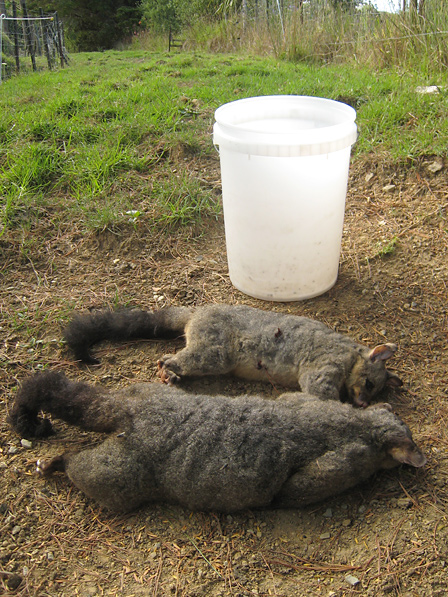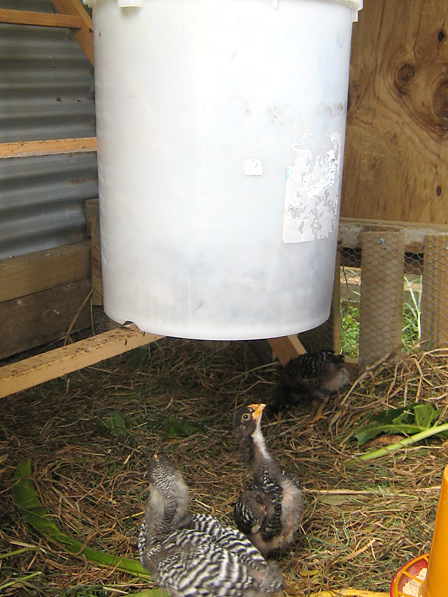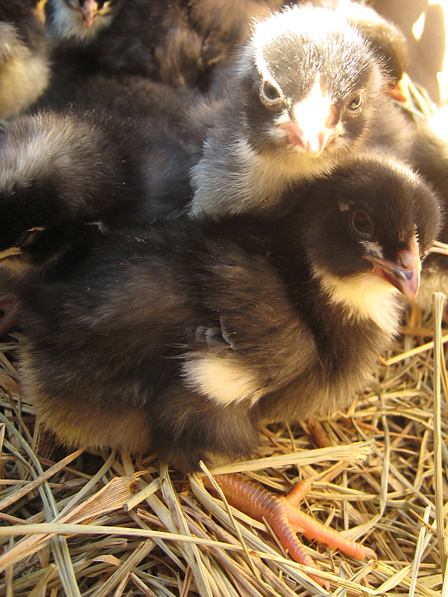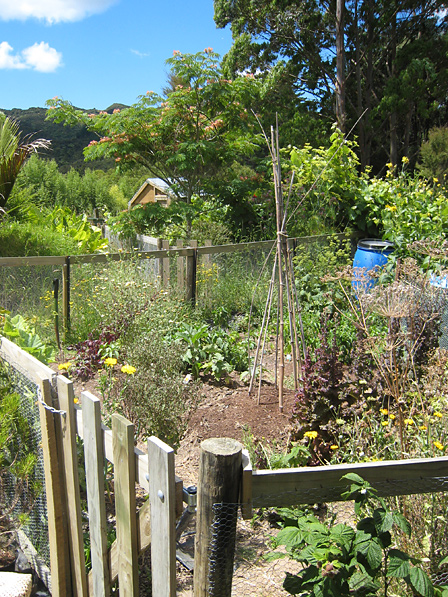Update: 3 May 2010
Recent rain has recharged the spring. There’s good flow into the tank and it’s 3/4 full now. Faucets, shower, etc. are working again.
The streams are still not flowing as usual, so we’re continuing to take it very carefully with water.
—End Update—
The Far North of New Zealand is experiencing the worst drought in 60 years. Kaitaia, the town near us, has been running under emergency conditions for weeks. Anyone caught using a hose outside faces a NZ$20,000 fine. The local farming community is in deep trouble. The hay and silage that has been put up for winter is already being used for feed. Some beef and dairy farmers are getting ready to slaughter their herds. Soon, it will be too cold to grow much grass, even if rain comes. But there’s no meaningful rain coming anyway…

Our new kitchen faucet
We have been OK here, but after months of what might as well have been no rain, the spring finally gave out, and we used up the water that had accumulated in the tank. Technically, the spring hasn’t stopped. I’d say that about five litres trickle down to our house per day. And the cows probably drank more water than we used.
For the last two weeks, we have been living over at Becky’s parents’ house. At first, we thought that it would be easier over there with Owen, but it turned out to be pretty hard going because their place isn’t two-year-old proof. We’re back home now, but living in a quasi camping mode. Our total, usable household water supply includes two 20 litre water containers and a 200 litre rainwater barrel that’s about half full. [Update: Our friend Andrew let us borrow another 20 litre container and offered to let us fill up over at his farm.]
I’ve been giving the chooks water from the rain barrel. I’ll probably start giving the dam water to the chickens, but I read somewhere that it’s better not to give very turbid water to chickens. I don’t know if that’s true, but our dam water is very cloudy.
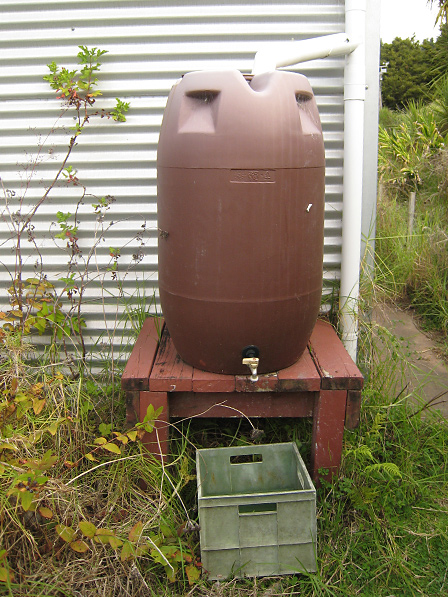
Rainwater barrel
I have been putting off piping water from the dam down to the troughs and garden. Well, nothing puts a bomb under your tail to complete a water infrastructure project like having cows with about a day’s worth of water remaining in their troughs. Luckily, this is a personal, local and regional collapse situation, and not a BIG biggy collapse. I was able to drive to town, in our petrol powered pickup truck/ute, and buy the NZ$550 worth of pipe and fittings that I needed to complete this project. The pipe was even on sale! HAHA. A few hours of work later and the cows had a gravity fed water supply. (Another time, I’ll write about the gravity feed system that I built. It’s working great.) At first, the cows stood by the trough and looked at me, in protest, “We want our spring water back.” But they got used to the dam water pretty fast. Bex and I are happy that we didn’t have to send our cows to the works, or give them away. I doubt that anyone would buy our cows now, since most people are facing the same situation with water.
I’m seriously thinking about buying a Big Berkey water filter, as that thing could keep us going if the drought persists. I could put our dam water through that and it would be fine. If the dam runs out (a really grim possibility) there is still plenty of water in the river below our property. It’s flowing well and the water is probably ok to drink. I just don’t like the word probably when it comes to the safety of water. We could have that water tested, but I wonder if the quality could vary over time… There are no intensive farming operations around that river. It’s just bush and several lifestylers with a few dozen cows over about five kilometres. Anyway, the Big Berkey could come in very handy if the shit really hits the fan here. The reality is that it will probably never be this dry here again in my lifetime, but there’s that word probably again…
